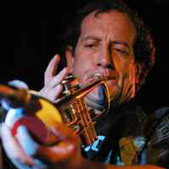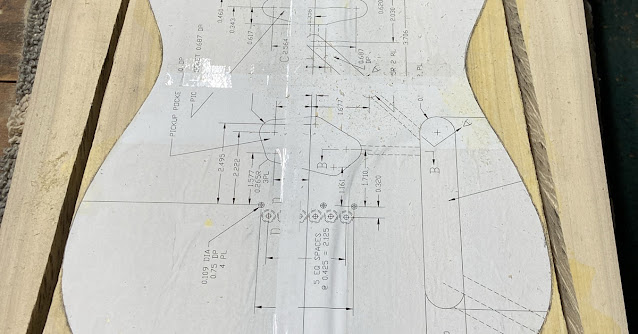Have you ever found yourself lost in the vast rabbit hole of YouTube? That endless stream of videos tailored to your interests, serving up an array of content that seems to know you better than you know yourself. As a consumer of music lessons, guitar building tutorials, and music commentary, YouTube has become my ultimate playground of discoveries. It never fails to surprise me, unveiling hidden gems and introducing me to artists and songs I never knew existed. The breadth of musical content available with a swipe or a scroll is staggering, and if I had the luxury of time, I could easily dedicate days immersing myself in this digital wonderland.
It reminds me of that classic moment from "The Office" when the ever-entertaining Michael Scott proclaimed, "I discovered YouTube, and I did not work for five days. I did nothing. I watched Cookie Monster sing 'Chocolate Rain' about a thousand times." (Season 3, Episode 17: "Product Recall"). Though I might not spend five consecutive days lost in YouTube's depths, I can certainly relate to the allure and the irresistible pull that captivating content can have on us.
And so, it is with this insatiable curiosity that I stumbled upon a performance that completely captivated me – a rendition of a song called "Cortez the Killer." Despite my extensive musical explorations, this iconic track had somehow slipped under my radar. However, thanks to YouTube's algorithmic wizardry, I found myself tapping the play button on a breathtaking live performance that left me awestruck. This piece, featuring the incredible talents of Grace Potter, Joe Satriani, Steve Kimock, Reed Mathis, Willy Waldman, and Stephen Perkins, was performed at the Jammys – an event that celebrates live music improvisation and brings together exceptional musicians from various genres.
Join me as we dive into the mesmerizing performance of "Cortez the Killer" and delve into the backgrounds of these extraordinary artists. From the fusion of their talents to the powerful impact of the song itself, we'll uncover the magic that unfolded on that stage and celebrate the beauty of music's ability to surprise and enchant us.
Spotlight on the Performers: Get to Know the Musicians Behind the Performance
"Cortez the Killer" is a song that was originally written and performed by the legendary Canadian singer-songwriter Neil Young. Released in 1975 on his album titled "Zuma," it was a time when I, as a fifth-grader, was engrossed in the world of Kiss, with their captivating music dominating my elementary school soundtrack. Back then, the profound essence of "Cortez the Killer" remained beyond the grasp of my ten-year-old mind. However, it's a realization that, in hindsight, should not have taken me forty years to uncover. Neil Young's poignant message embedded within the song awaited my belated discovery, adding another layer of appreciation to this timeless masterpiece.

Grace Potter
Grace Potter is an American singer-songwriter and musician. She gained prominence as the lead vocalist and multi-instrumentalist of the band Grace Potter and the Nocturnals. Known for her soulful vocals and energetic stage presence, Potter has released several successful albums, including "Midnight" and "Daylight." She has collaborated with various artists and is admired for her versatility across genres.
Photo credit: By Frank Schwichtenberg - Own work, CC BY-SA 4.0, Link

Joe Satriani
Joe Satriani is an American guitarist and composer renowned for his instrumental rock music. He is known for his technical proficiency and melodic guitar solos. Satriani has released numerous solo albums, including "Surfing with the Alien" and "The Extremist," and has received critical acclaim for his guitar work. He has also been a guitar instructor to several notable musicians.
Photo credit: By Alfred Nitsch - Own work, CC BY-SA 3.0, Link

Steve Kimock
Steve Kimock is an American guitarist known for his improvisational skills and contributions to the jam band scene. He has been a member of various bands, including the Steve Kimock Band, Zero, and the Rhythm Devils. Kimock's playing style blends elements of jazz, rock, and blues, and he has collaborated with a wide range of musicians throughout his career.
Photo credit: By Ron 'Skip' Magee from the United States - Steve Kimock, CC BY-SA 2.0, Link

Reed Mathis
Reed Mathis is an American bassist and composer who has performed with several bands and artists. He is known for his work with the band Tea Leaf Green, as well as collaborations with musicians like Bill Kreutzmann (of the Grateful Dead) and Mickey Hart. Mathis is recognized for his versatile bass playing and ability to seamlessly navigate different musical styles.
Photo credit: Spotify, Link

Willy Waldman
Willy Waldman is an American trumpet player known for his contributions to the jazz, rock, and funk genres. He has collaborated with a diverse range of artists, including Snoop Dogg, Tupac Shakur, and the James Brown Band. Waldman's trumpet playing adds a unique flavor to the music he performs, and his improvisational skills are highly regarded.
Photo credit: Discography | Discogs, Link

Stephen Perkins
Stephen Perkins is an American drummer best known as the drummer for the alternative rock band Jane's Addiction. He is recognized for his powerful and dynamic drumming style, which blends elements of rock, funk, and tribal rhythms. Perkins has also been involved in various other musical projects and has showcased his skills with his distinctive drumming approach.
Photo credit: Gonzalo Tello, Link
The Jammys: Where Musical Genres Collide and Brilliance Shines
The Jammy Awards, also known as the Jammys, were an annual awards ceremony that celebrated live music improvisation. They were established in 2000 and ran until 2008. The event aimed to recognize outstanding performances and collaborations within the jam band community and encompassed a variety of genres such as rock, jazz, funk, and bluegrass.
During its run the Jammys featured live performances and special collaborations by prominent artists from the jam band scene and beyond. The event highlighted the improvisational and spontaneous nature of live music, with musicians often jamming together on stage. These collaborations often brought together musicians from different bands and genres, creating exciting and one-of-a-kind musical experiences including this stand out performance of "Cortez the Killer."
While the Jammys may be a part of music history now, the impact it had on the jam band community and the memories created through its extraordinary performances continue to inspire musicians and fans alike. The performance of "Cortez the Killer" by the ensemble you witnessed serves as a reminder of the creativity, passion, and sheer talent that can be unleashed in the realm of live music.
Learn from the Best: Justin Sandercoe's Step-by-Step Tutorial for "Cortez the Killer"
For guitar players looking to learn how to play 'Cortez the Killer' by Neil Young, I highly recommend checking out Justin Sandercoe's tutorial on JustinGuitar.com. Justin is a renowned guitar instructor with years of experience in playing, writing, and recording music. His website, founded in 2003, offers a wealth of guitar lessons and resources for players of all levels. As a respected musician, Justin has contributed to numerous high-profile music projects and served as a 'sideman' for various artists. Don't miss the chance to learn this iconic song from a trusted instructor! Head over to JustinGuitar.com and dive into the world of 'Cortez the Killer' today.
Lyrics and Chord progression
Verse:
Em | D | C | G
Chorus:
D | C | Em | G
These chords repeat throughout the song.
Lyrics:
Here are the lyrics for "Cortez the Killer":
[Verse 1]
He came dancing across the water
With his galleons and guns
Looking for the new world
In that palace in the sun
[Chorus]
On the shore lay Montezuma
With his coca leaves and pearls
In his halls he often wondered
With the secrets of the worlds
[Verse 2]
And his subjects
Gathered 'round him
Like the leaves around a tree
In their clothes of many colors
For the angry gods to see
[Chorus]
And the women all were beautiful
And the men stood straight and strong
They offered life in sacrifice
So that others could go on
[Verse 3]
Hate was just a legend
And war was never known
The people worked together
And they lifted many stones
[Chorus]
They carried them to the flatlands
And they died along the way
But they built up with their bare hands
What we still can't do today
[Verse 4]
And I know she's living there
And she loves me to this day
I still can't remember when
Or how I lost my way
[Chorus]
He came dancing across the water
Cortez, Cortez
What a killer




